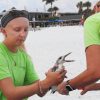A great horned owl devours a mouse after dark in Fort De Soto Park.
Two Eckerd College professors, with help from several of their students, set up 20 solar-powered, motion-activated cameras inside Pinellas County’s Fort De Soto Park in 2021 to document the wildlife that comes into view when everyone is gone.
Funded by Eckerd’s First-Year Student Research Associateships and a grant from the Tampa Bay Estuary Program, students collect the images and categorize them for public viewing. Now in its second year, the project is titled Using Camera Traps to Understand Faunal Biodiversity and Distribution at Fort De Soto Park.
Beth Forys, Ph.D., the Richard R. Hallin Professor in Natural Sciences at Eckerd College, and Tim Bransford, Ph.D., assistant professor of animal studies at Eckerd, began the project to learn what kind of wildlife lives at the county-owned, 1,136-acre park and how it can be protected. The cameras have captured an array of wildlife—including raccoons, armadillos, opossums, tortoises, rabbits, herons and river otters. Even sea turtles.
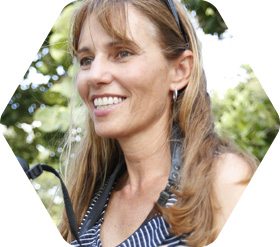
Beth Forys, professor of environmental science and biology
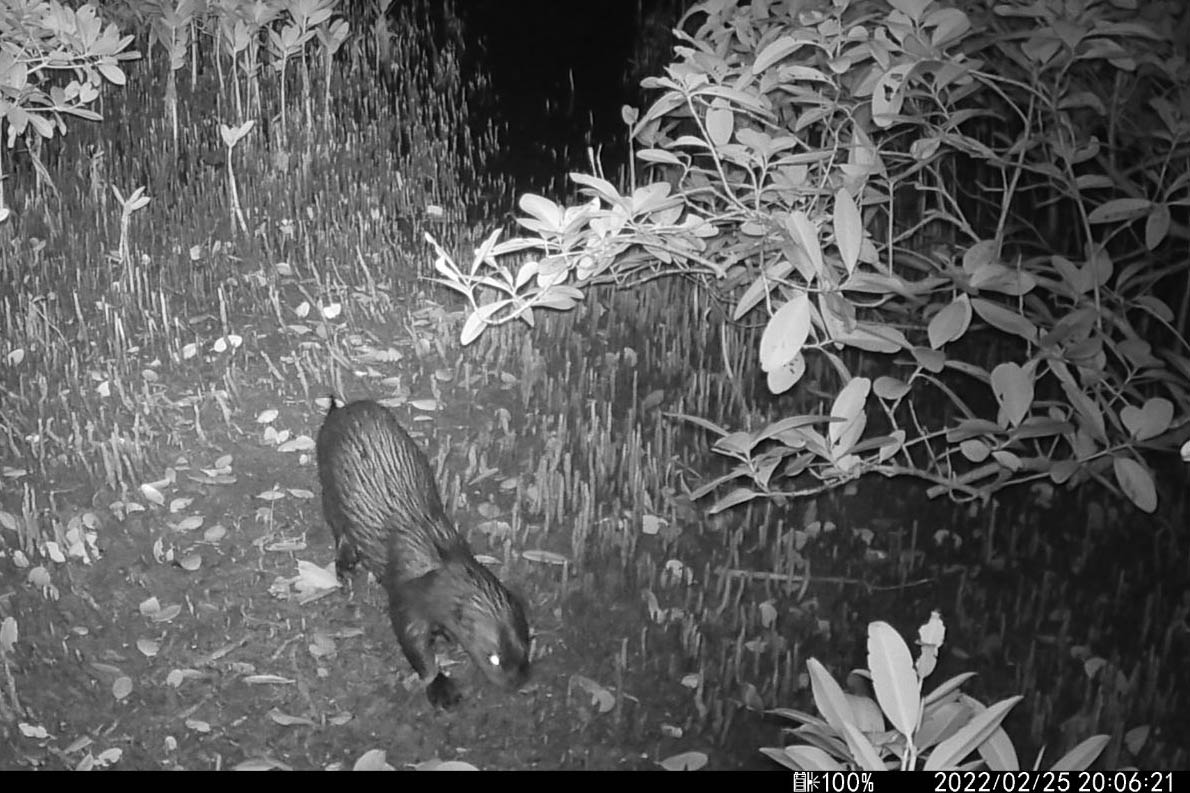
A river otter wanders through the mangroves after dark.
The cameras also captured the attention of the Estuary Program, which recently selected the project as the winner of its 2021 Golden Mangrove Award. The award is presented to the most outstanding grant project for each grant cycle. This year there were 13 eligible projects, including those submitted by the University of Florida and Tampa Bay Watch. The Estuary Program presented Eckerd with the award May 19 at the Lealman Exchange Community Center in St. Petersburg.
“The advisory committee reviewed the scope of the work, the deliverables from the project and the final report,” explains Sheila Scolaro, community programs scientist for the Estuary Program. “They chose Eckerd because it presented an innovative project not typically seen, and they really loved the student involvement in the research experience, and that the concept is repeatable for other students and can be done in other parks.”
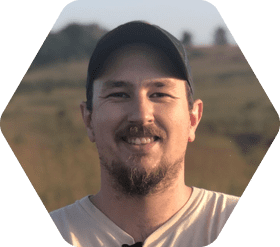
Tim Bransford, assistant professor of animal studies
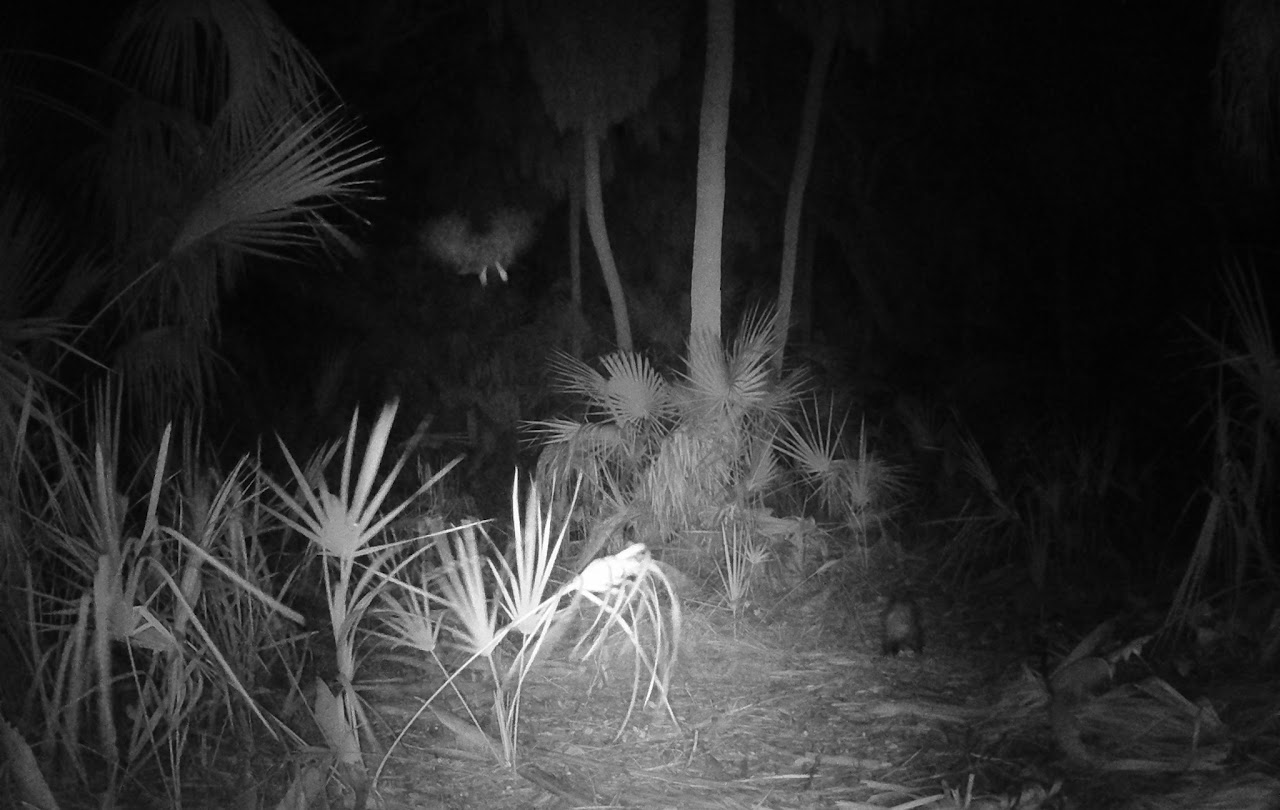
An owl (blur in upper left) and a Virginia opossum caught in the same frame
Founded in 1991, the Tampa Bay Estuary Program is an intergovernmental partnership of Hillsborough, Manatee, Pasco and Pinellas counties; the cities of Tampa, St. Petersburg and Clearwater; the U.S. Environmental Protection Agency; the Southwest Florida Water Management District; and the Florida Department of Environmental Protection. The program’s mission, according to its website, is to “build partnerships to restore and protect Tampa Bay through implementation of a scientifically sound, community-based management plan.”
For Bransford and Forys, the project not only provides a glimpse at a rarely seen collection of animals and birds in their natural habitat, it offers students a chance to collect data, analyze it and share it with the public. Next to a subset of the cameras is a sign with a QR code that links to a website where anyone can view recent photos and videos. “It’s amazing how many people look at the photos,” Forys says. “And they’re people from all around the globe.”
Bransford points out that the project began “because we care about our local environment, and we wanted to give students a long-term project they can be a part of. It’s really nice, and rare, that a local organization recognizes you for that. They think the project is worthwhile and they want us to know that.”
The carapace of a loggerhead turtle meanders past a camera trap.
Forys explains that the award might make it easier to get subsequent funding to, for instance, help pay for summer internships for students like Spencer Harris—a senior animal studies, economics and environmental studies student from Daly City, California, who last year drove to the park to collect memory cards from the cameras and upload the images to the webpage he’d helped design.
“It’s nice to see the work all of us put in be recognized,” Spencer says. “And to see an organization like the Tampa Bay Estuary Program give us funding. Because of that, we are able to do something that has an impact on Eckerd students and the Tampa Bay region.”
“It was quite an honor to receive the recognition,” Forys adds. “It’s been a really rewarding project, it’s provided students with unique experiences, we’ve gotten interesting data, and we’re helping educate the public.”





